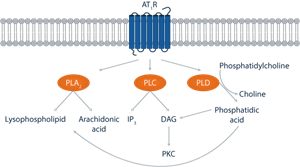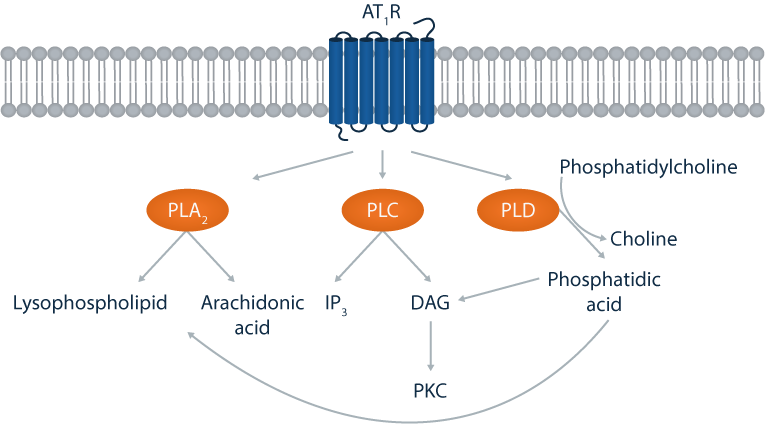Cell Lines For Studying Phospholipases
Phospholipases are ubiquitously expressed enzymes that control the levels of phospholipid substrates by catalyzing the lysis of phosphorylated lipids. The released lipid molecules then initiate signaling cascades known to regulate cell function.
This complex family is involved in the mechanisms of a number of diseases including cancer and heart disease, and has been implicated in conditions such as brain disorder/injury, kidney and immune cell dysfunction.
Phospholipases are ubiquitously expressed enzymes that control the levels of phospholipid substrates 
Phospholipases

Phospholipases
The four distinct classes of phospholipases (PL)
These are identified as PLA, PLB, PLC and PLD, each promoting cleavage at specific ester bonds within phospholipids. Each phospholipase family has several isoforms, which function within specific cell types and are differentially distributed.
The PLA class has members A1 and A2.
- PLA1 enzymes are known in mammals.
- PLA2 action leads to the formation of eicosanoids, including leukotrienes and prostaglandins, which can affect many potentially pathogenic responses, such as diverse inflammatory/allergic diseases.
- PLA2 isoforms have also been implicated in neurological disorders. PLA2G6 is involved in regulating levels of phosphatidylcholine and PLA2G6 mutations have been linked with infantile neuroaxonal dystrophy, a progressive neurological disorder that causes intellectual disability and movement problems.
PLB cleaves acyl chains from both the sn-1 and sn-2 positions, and so can carry out the reactions of both PLA1 and PLA2.
A wide range of disorders has been associated with PLC genetic aberrations. Mutations in PLCB1 have been linked to a form of epilepsy and changes in the PLCG2 gene are associated with auto-inflammation and antibody deficiency. The development of PLC inhibitors is an active area of research.
There are several isoforms of phospholipase D, and these play a central role in numerous physiological processes, including membrane trafficking, cytoskeletal reorganization, receptor-mediated endocytosis, exocytosis, and cell migration. PLD isoforms has been implicated in the pathophysiology of multiple diseases, in particular the progression of Parkinson’s and Alzheimer’s (PLD3), and various cancers (PLD2).
Explore our popular knockout cell lines for studying Phospholipases
| PLA2G12A | PLA2G15 | PLA2G4A | PLA2G4B |
| PLA2G6 | PLCB1 | PLCB3 | PLCB4 |
| PLCD1 | PLCD3 | PLCD4 | PLCE1 |
| PLCG1 | PLCG2 | PLD1 | PLD2 |
| PLD3 | PLD5 | PLD6 |
$name
Human knockout HAP-1 cells
The single largest bank of isogenic cell lines with over 7,500 cell lines to choose from and trusted by academia, biotech, and pharma research labs.
Cancer-related cell lines
Choose from over 300 knock-in and knockout cell line models in many standard cancer cell lines such as DLD1, MCF10A, and HCT116.
Cas9 Stable Cell Lines
Simplify gene editing experiments with stably expressing Cas9 cell lines
CRISPRmod CRISPRa dCas9-VPR Stable Cell Lines
Streamline CRISPR activation experiments with stably expressing dCas9-VPR cell lines
